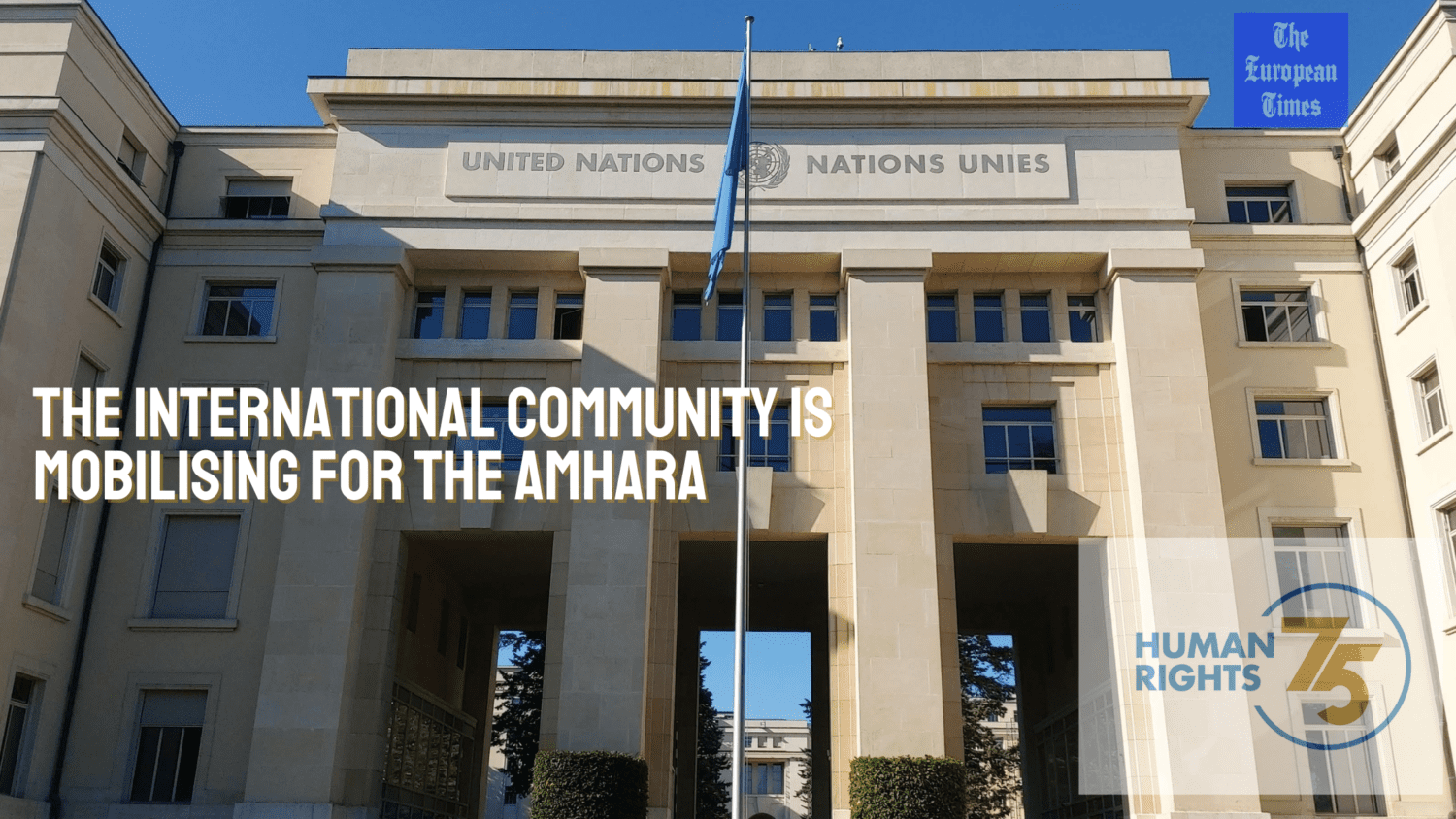On 12 August 2022, in the evening, about sixty people in their sixties were attending a quiet philosophy class in a coffee shop located on the ground-floor of a ten-floor building in the State of Israel Avenue, in a middle-class district of Buenos Aires when suddenly all hell broke loose.
This article was originally published by Bitter Winter under the title “Anti-Cult Repression in Argentina 1. PROTEX and Pablo Salum” (17 August 2023)
A special agency against human trafficking cooperates with a bizarre anti-cult activist who regards even the Catholic Carmelite nuns as a “cult.”
Fully armed SWAT team police led by PROTEX—a state agency dealing with human trafficking, labor and sex exploitation of persons—broke the door of the meeting place and by force entered the building which was the seat of a yoga school, 25 private apartments and professional offices of a number of its members. They went up to all the premises and without knocking or ringing the bells, they violently opened all the doors by force, seriously damaging them.
According to a complaint by a person whose name was not officially disclosed, the founder of the Buenos Aires Yoga School (BAYS) recruited people through deceit in order to reduce them to a situation of servitude and/or sexual exploitation. The plaintiff chose afterwards to reveal his name and to boast about its initiative on his YouTube channel, his social media, and media in general: Pablo Gaston Salum.
In 2023, several scholars in religious studies were invited to Argentina to attend a panel in an international human rights event co-organized by the government and UNESCO. They took this opportunity to study the BAYS case.
Human Rights Without Frontiers also investigated this issue and already published three articles: A yoga school in the eye of a media cyclone and police abuse – Nine women sue a state institution abusively calling them victims of sexual abuse – Happy 85th Birthday, Mr Percowicz.
Who is Pablo Salum?
Pablo Gaston Salum, born in 1978, had a hectic schooling and life. In 1990 and 1991, while he was living with his mother, a BAYS follower, he stopped attending his classes and had to repeat the 6th grade of his elementary school. In 1992, after (according to her report) beating his mother, he was taken in by his father. He was then 14 years old and his elementary school was still not finished. One year later, he quarreled with his stepmother and went to live at a friend’s family but at their own expense. After some time, they asked him to leave.
In 1995, he went back to the home of his father who after some time and some more quarrels declared him a runaway to the police. In the meantime, he tried to continue his studies in a secondary school but dropped out again. He went back again to his mother’s and continued his turbulent life with his parents.
In 1996, as he did not want to study any more or to work and was violent with his mother, his older brother German Javier, a former but not disgruntled follower of BAYS, took him at home. Despite his new human environment, his violence did not diminish and his brother German with another person filed a complaint against him for death threats. He was then detained by the police for two days. And Pablo Salum resumed his nomadic life, staying then with his stepfather Carlos Mannina, a former but not disgruntled BAYS member, already separated from his mother years before.
In the meantime, his brother had a successful professional life as the director of a real estate agency in Buenos Aires, and his sister has been working abroad for more than ten years as a nurse after having studied in the US.
The fantasies and the lies of Pablo Salum
Pablo Salum claims on his Instagram profile Pablogsalum to have founded the Freeminds Network (Red Librementes), a de facto association which is not known to be officially registered as a civic association. He also presents himself as a human rights activist and “the creator of the law of assistance to victims and relatives of coercive cults.”
The website Celeknow.com, which among other miscellaneous topics publishes gossips about a wide range of personalities in the spotlight, presents him as “a worker fighting for human and animal rights,” as well as “a social worker” and “an activist fighting against coercive cults.”
Nothing indicates that he has the profile of a human rights defender and no other professional website than his does.
Boasting on social media of alleged achievements such as “the creation of a law against cults” looks more like megalomania than a reality. Pablo Salum is not a lawmaker elected by the Argentinian people. Modesty is one of the main characteristics of a human rights defender. He does not have that quality. He constantly disguises reality and openly lies about his family life in order to present himself as a victim, a survivor of something fictitious, and an anticult crusader as this provides him opportunities to be interviewed by the media.
Pablo Salum is just a blogger and an influencer who wants to be in the spotlight as it can also be seen on his videos. The Argentinian authorities prosecuting BAYS on the basis of his declarations should reconsider the reliability and the relevance of their source of information in this regard.
Pablo Salum claims to have left the so-called “BAYS cult” at the age of 14, to which his mother and his older brother and sister belonged and are still allegedly under its grip. In the Argentinian media and in his own videos, he claims to be a “survivor,” to have lost track of his family—his mother, brother and sister—while weeping with a deceptive pathos over his lack of contact with them. He even goes so far as to declare that they have been “kidnapped” by the “cult.” For sure he is a good comedian.
The reality is very different and it is surprising that most Argentinian journalists do not bother to do the slightest verification about what he says and claims to be. A 15-minute video prepared and supplied to “Bitter Winter” by BAYS members (not involved in the investigation), ex-members and relatives, reveals irrefutable evidence of Pablo Salum’s fabrications and silenced disturbing facts about his conflictual relations with his family.
Pablo Salum’s mother has never changed her address since her son left. As for his brother German and his sister Andrea, all you had to do to get in touch with them was to google their names. Pablo Salum’s declarations about them are just all lies.
When somebody as strange as Pablo Salum is invited to the Argentinian Senate to talk about “cults,” we understand Argentina has a problem. From Facebook.
Salum siding with China’s dictatorship against persecuted religious minorities
In the area of freedom of religion or belief, Pablo Salum is certainly not a human rights activist. As a free thinker, he is even hostile to such a freedom.
In May 2022, he took sides with the Chinese Communist Party (CCP) against Falun Gong practitioners tweeting “Remember that Falun Dafa is a dangerous coercive organization #Secta of Chinese origin that is operating in Argentina and other countries WITH IMPUNITY as seen in this photo. It would be good if you alert the public.” Amnesty International and Human Rights Watch have largely documented the cases of illegal detention and forced organ harvesting of thousands of Falun Gong practitioners by the Chinese government. Salum has taken an opposite direction.
In a recent incident involving the Dalai Lama and a young boy, Salum used the opportunity to call His Holiness ”this criminal who wants to be called Dalai Lama.” He called the Tibetan Buddhism he leads “a cult involved in human trafficking and pedophilia,” and Buddhism in general as a religion hiding “obscure coercive doctrines” typical of “cults.”
Salum’s hate speeches
The Catholic Discalced Carmelites nuns are a “cult” “trafficking” their victims according to Pablo Salum. From Twitter.
According to Salum, the Mormon Church is a coercive cult which covers up sexual abuses. As to Jehovah’s Witnesses, he considers their movement “a terrorist organization,” which is worse than Putin’s accusation of “extremist organization.” Noteworthy is the number of Jehovah’s Witnesses detained for years in Russia, including Crimea, for practicing their faith in private, more than 130. Adventists and even Catholic Carmelites are also targeted by Salum.
Even Freemasonry is qualified by him as extremely dangerous in Mexico.
Even Freemasonry is regarded as a “coercive cult” by Salum. From Twitter.
*Academic articles on the BAYS case:
By Susan Palmer: “From Cults to ‘Cobayes’: New Religions as ‘Guinea Pigs’ for Testing New Laws. The Case of the Buenos Aires Yoga School.”
By Massimo Introvigne: “The Great Cult Scare in Argentina and the Buenos Aires Yoga School.”














